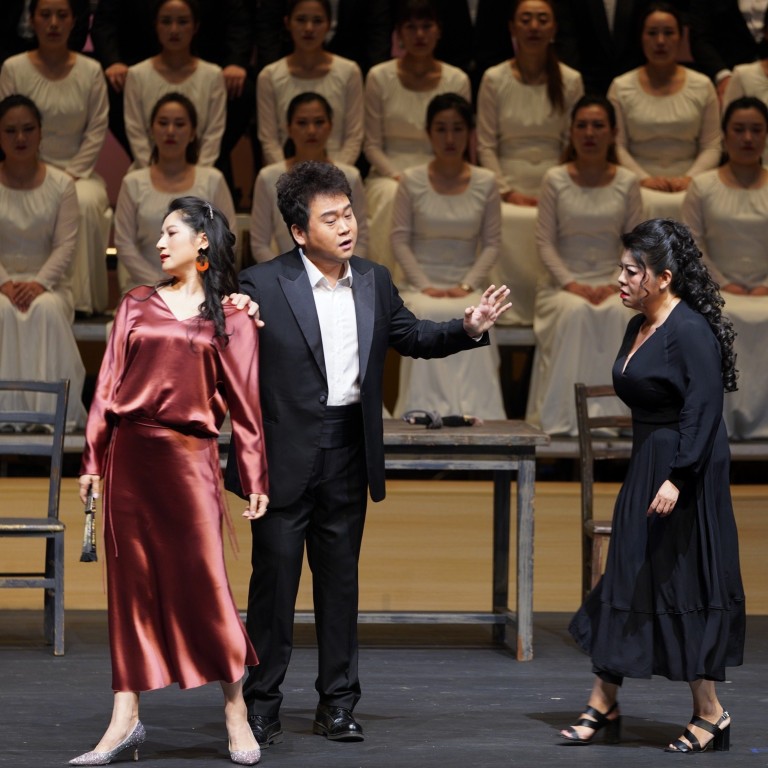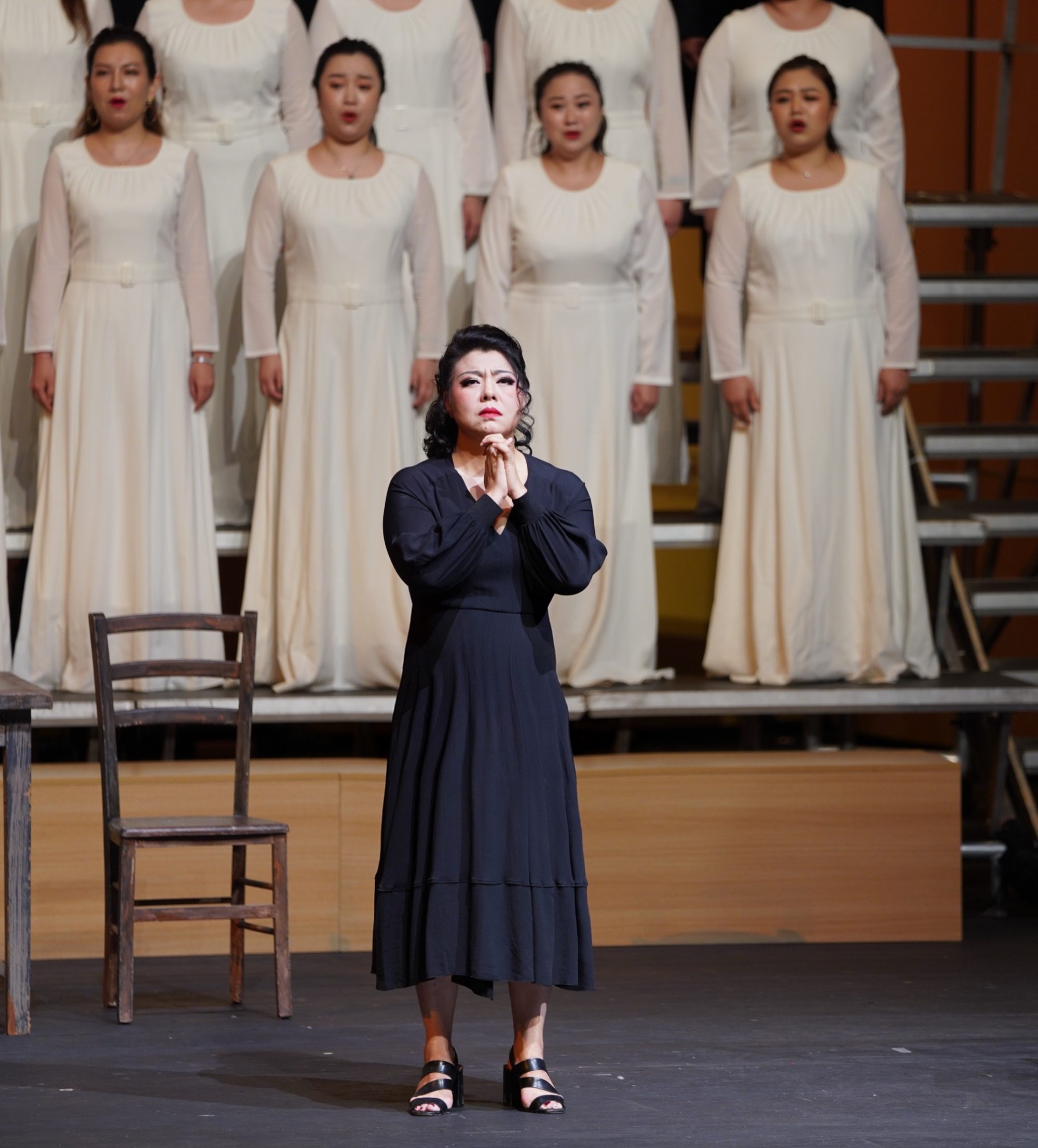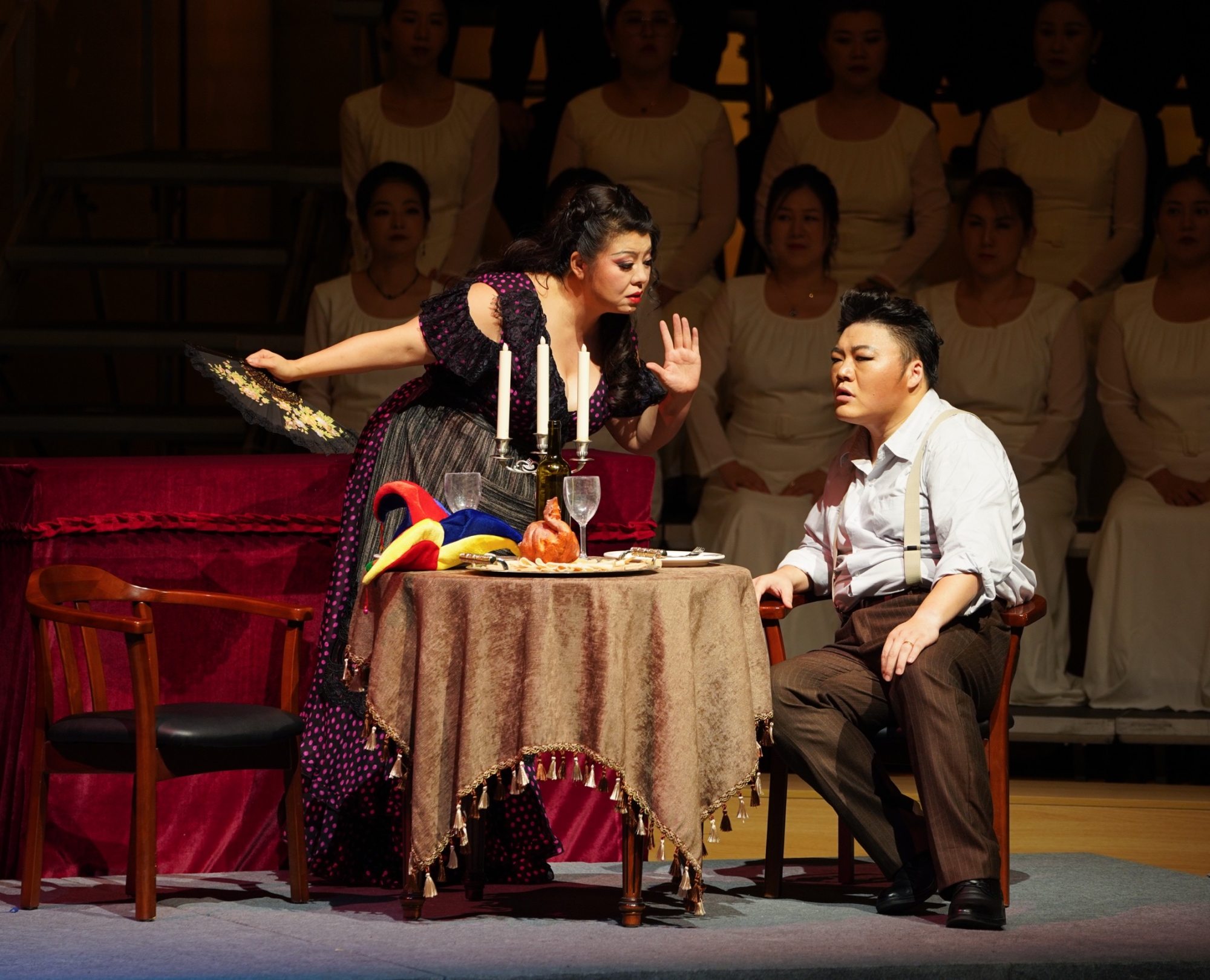
Review | Shanghai Opera House’s Cavalleria Rusticana and Pagliacci for Hong Kong Arts Festival offer hits and misses
- The closing performances of the 2022 Hong Kong Arts Festival, streamed free online, these Italian operas are a study in contrasts
- Cavalleria Rusticana is staged but in concert dress, which robs it of drama. Pagliacci in costume works better; Han Peng and He Hui deliver in the lead roles
Before the fifth wave of the Covid-19 outbreak in Hong Kong forced the cancellation of all live performances for the 50th Hong Kong Arts Festival, Shanghai Opera House was scheduled to present a production of 19th century French composer Gounod’s opera Roméo et Juliette to close it out.
Instead, the opera house ended up streaming a pre-recorded double bill of Mascagni’s Cavalleria Rusticana and Leoncavallo’s Pagliacci as the festival’s grand finale.
The performances were recorded in September 2021 in the Shanghai Grand Theatre and are available for free viewing anywhere in the world until April 23.
The two operas have been paired together in performance since 1893 because of their relative brevity and their complementary verismo approach to depicting tales of the Italian peasantry.
Bamberg Symphony Orchestra excel for Hong Kong Arts Festival
With an all-Chinese cast tackling these emblems of the Italian realist movement with minimal attention to mise-en-scène and costume design, the intent was presumably to highlight the works’ musical attributes with as few distractions as possible.
This approach is successful on some fronts, but fails on others. The 80-strong choir, dressed in concert attire, are positioned on risers. They look down at the main cast occupying the stage below, ready to comment rather than participate in the action.
For Cavalleria Rusticana, some furniture appears on the sides of the stage, but this smacks of tokenism and it hardly features in the action at all. The cast are similarly clad in concert dress, which hardly helps them emulate the everyday folk in a Sicilian village.
Musically, the overture to the work fulfils its role, with the orchestra projecting a sound that is rich and befitting of the action to follow. Cleverly, shadows of a couple embracing are projected on a side wall of the auditorium while it plays, a technique revisited at the end of the opera to depict a murderous duel.
Xue Haoyin, as Turiddu, opens proceedings with the famous aria O Lola c’hai di latti la cammisa in which he sings of his affection for his fiancée, Lola, who has married another man while he was away on military service.
The orchestra ordinarily has a significant role in this opening scene, but under conductor Xu Zhong its expressiveness is restrained. In contrast the choir offers powerful sonorities, but could be more precise with its entries.
The soprano He Hui, as the distraught and conflicted Santuzza, the lover of Turiddu who’s trying to win him back, offers great vocal strength but lacks the nuance required of her complex character. However, for the famous Easter hymn, the power of her voice allows her to project it over the choral forces in a memorable statement of religious rejoicing.

The opera’s Intermezzo is rendered with great poignancy to provide a contrast to the drama that precedes it.
In Act Two, the chorus is normally required to interact with the main cast on stage, and it is here that the divide between the static choir and mobile leads becomes noticeably odd. The scream emitted by one of the chorus members to announce a death is grating and lacks theatre.
For the second of the operas, Pagliacci, about a travelling troupe of clowns, the characters wear make-up and costumes. Sun Li offers a cautious interpretation of Tonio with some shaky top notes, and does not fully capture the humour of the character. His delivery of the important message about “art imitating life” during the prologue is not entirely convincing either.

As the head of the troupe, Han Peng’s Canio has some impressive moments, especially in his rendition of Vesti la giubba, one of the late tenor Luciano Pavarotti’s signature arias. Despite Han’s somewhat methodical execution, he manages to convey Canio’s internal struggles and illuminate the message of “the show must go on”.
He Hui is the only member of the Cavalleria Rusticana cast to appear in Pagliacci, playing Canio’s wife Nedda, a role in which she is suitably insouciant. The high point of the opera comes when Canio confronts Nedda and accuses her of infidelity. The dramatic tension between the two leads is palpable, and helps elevate the opera’s climactic closing moments.
There is some debate over which character should say the final line: “La Commedia è finita!”. In the original manuscript it is Tonio, which gives the story an overarching neatness and a more logical narrative. Following standard practice, it is Canio who delivers the line here.
That is one of several decisions about the semi-staged productions of these two operas that warrant further scrutiny to help raise them to greater heights.
